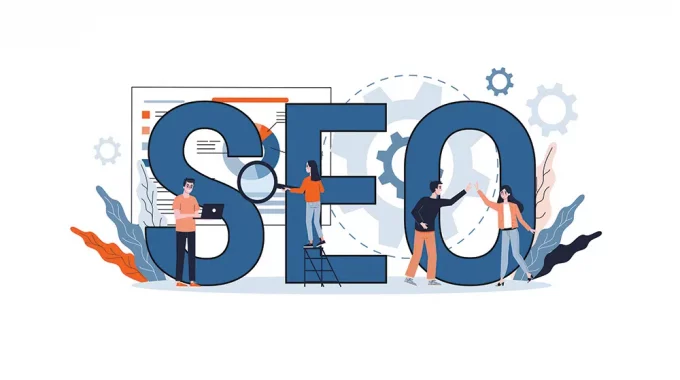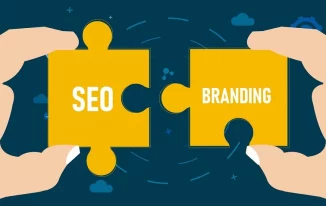Do you wish to optimize your website but find it difficult to speak with the tech people that manage it? So you require an SEO glossary. The most important search engine optimization (SEO) terms are included here to make it easier for marketers to connect with developers and comprehend how to improve their websites.
Numbers
2xx Status Codes - Status code 2xx indicates that the request was successful and was sent by the server.
301 Redirect - Redirecting a webpage from one URL to another permanently is accomplished with a 301 redirect.
302 Redirect - Redirecting a webpage from one URL to another for a brief period is known as a 302 redirect.
4xx status codes - Are issued by the server to indicate that the information was not found and the request failed.
A
Accelerated Mobile Pages (AMP) - This is a Google open-source project that aims to assist publishers in producing content and websites that are responsive across all devices.
ALT Text/ ALT Attribute - The HTML description of a picture is known as the ALT Text/Alt Attribute. Search engines, unlike people, only scan the ALT text of images, not the actual images. When feasible, add ALT text to photos.
Anchor Text - The actual content of a link to a website is called the "anchor text." This content is typically bolded in dark blue on websites, or purple if you've already clicked the link. The content of the destination page is described in the anchor text, which also aids search engines in understanding the purpose of the link.
Authority - Search engine algorithms determine a website's authority, or how trustworthy it is.
B
Backlink- A backlink is a reference to another website in an SEO glossary.
Black Hat - Techniques that contravene Google's webmaster policies.
Blog - A website with blog posts about particular subjects and/or industries.
Bookmark - A bookmark is a website link that has been saved in your computer's or web browser for future use.
Bot - A computer program designed to carry out certain activities.
Bounce Rate - The percentage of visitors to a website who only stay for one page.
Branded Keyword - A keyword or search term that alludes to a particular brand. such as "Nike shoes"
Breadcrumb - A breadcrumb is a link on a website that indicates where you are and how far you are from the homepage.
Broken link - One who clicks on a broken link is taken to a 404 error page. If a webpage is deleted without a redirect, this may occur. (View status codes in 4xx)
Browser - Browser software gives you access to data and information on the internet. Google Chrome, Safari, and Firefox are the three most widely used browsers.
C
Cache - Websites, apps, and browsers can load content more quickly by using a storage space known as a cache.
Canonical URL - The optimal location for a user to find a piece of information is at the canonical URL. There may be occasions when multiple addresses allow you to view the same page's content. Search engines can better comprehend the best address for a piece of content when the canonical URL is specified.
ccTLD - Country-code top-level domains, or "ccTLDs," are used to specify the domain for a particular nation or region. Consider www.mysite.co.uk.
Cloaking - Cloaking is a grey hat technique used to display content on a website that isn't what the user intended.
Conversion - A conversion form is a form you can use to gather data on site visitors. Traffic is transformed into leads through conversion forms. You can follow up with these leads more easily if you collect contact information.
Crawler - A tool called a "crawler" is employed by search engines to acquire data about websites and properly index them.
CSS - CSS (Cascading Style Sheets) is the section of your website's code that specifies how certain site elements should look (examples: headers, links).
D
Deep Link - A deep link can point to a webpage other than the homepage or content on a mobile application, depending on the context.
De-Index - When a search engine removes a website or webpage from search results, it is said to be de-indexed.
Disavow - When you instruct Google to disregard links that are unnatural, spammy, or low-quality.
Do Follow - A link with the "do follow" property tells search engines to follow the link rather than the one with the "no follow" attribute. Nofollow (See)
Domain - The domain is your website's primary web address (example: www.yoursite.com).
E
Engagement - When customers engage with the content of a brand. Engagement can take the form of responding to or commenting on a post.
Outside Links - Links that lead the user to another domain are known as external links. also referred to as outbound links or backlinks.
External Links - According to the SEO glossary, links take visitors to another domain. These are additionally referred to as backlinks or external links.
F
Featured Snippet - Position 0 on some Google search results lists highlighted extracts at the top.
Fold - The "fold" is the portion of your website where the bottom of a user's monitor or browser window abruptly ends the page. Scrolling is required to view content that is below the fold. Content that is shown above the fold is given some weight by search engines because it will be noticed by new visitors immediately.
G
Google My Business - A local business listing provided by Google called My Business.
Google Search Console - You may check on a website's performance using the free Google Search Console tool.
Guest Blogging - The act of posting a blog entry on another person's website is known as guest blogging.
H
Header tag - A piece of code used to separate paragraph headings and subheadings.
Headings - Section headings on your website that are contained within an H1 or H2 header element. This text frequently appears on the page in a bolder, larger font than other text.
HTML - The portion of your website's code that search engines read is called HTML. To ensure that search engines can read your website quickly and frequently, keep your HTML as clear as you can. As much layout-related code as you can, place it in CSS rather than HTML.
I
Indexing - The keeping of data that search engine crawlers have gathered. In recent years, Google has steadily turned to utilize the content of websites that are optimized for mobile devices as the primary indexing format.
Linking back - Inbound links are links that point users to your website from other websites.
Links Within - A link pointing users to a page inside the same domain is called an internal link.
J
Javascript - This is a scripting language that enables webmasters to apply a variety of effects or changes to their website's content while visitors browse it.
K
Keyword - A word entered by a user in a search. Every web page should be optimized to attract users who have typed in certain keywords.
Keyword Difficulty - The term "keyword difficulty" describes how difficult it will be to rank for a keyword and how competitive it is.
Keyword Research - Searching for keywords in your SEO glossary to include in your content based on volume, keyword difficulty, and other characters is called keyword research.
Keyword Stuffing - Overusing keywords in your text sample to rank better among others is known as "keyword stuffing."
L
Lazy Loading - By delaying the loading of an object until it is required, lazy loading helps increase page speed. This is exemplified by websites' limitless scrolling.
Link building - In an SEO glossary is the process and activity of increasing inbound links to your website to boost search engine rankings.
Link juice - the worth or authority that a website receives when it links back to another website with high authority. (Backlink available)
Link schemes - are what Google refers to be spammy techniques used to manipulate Google's PageRank and boost search rankings through the purchase or sale of links, excessive cross-linking, or other tricks.
Long Tail Keyword - In an SEO glossary, a long-tail keyword is a more detailed search term that contains more than three words.
M
MetaData - The term "metadata" in the SEO glossary refers to the information that informs search engines about the content of your website.
Meta Meaning - A concise summary of a page's contents and the reason someone would want to visit it in no more than 160 characters is known as a meta description. As an example of the material on the page, this is shown on search engine results pages beneath the page title.
Meta Keywords - In the 1990s and the early 2000s, search engines used the meta keywords tag to help them understand the subject of a web page. Today, none of the major search engines use it.
Minification - An SEO glossary is a process of eliminating extraneous characters from source code to make a website load more quickly without sacrificing functionality.
Mobile First Indexing - Google now primarily indexes and ranks websites using their mobile versions, a practice known as "mobile-first indexing." The desktop was the standard in the past.
N
Nofollow - in SEO glossary refers to a link's inability to give another website any SEO points.
O
Organic Traffic - Visitors that find your website on the SERPs without using a paid search engine are referred to as "organic traffic."
P
Page Speed - This term describes how rapidly a website loads. In the SEO glossary, the number of files, the source code, and the web server is influencing factors.
Page Title - The name you give your web page appears in the browser window's page title at the top. Keywords relevant to your business should be used in page names. Your page title's first few words carry greater weight than those at the end.
PageRank - A ranking from 0 to 10, given by Google, showing the effectiveness of your entire SEO. Its formal name is "Toolbar PageRank."
Pagination - An SEO glossary is a process of segmenting a body of text into a multi-page list. Consider the category pages on online stores.
Panda - Formerly a separate Google algorithm designed to detect black hat techniques, Panda is now a component of Google's core algorithm.
People Also Ask - In SEO glossary is a feature that may appear on the SERP to display pertinent queries and their associated questions.
PPC (Pay-Per-Click) - This is a form of internet advertising in which the advertiser places an ad in a directory and compensates the directory each time a user clicks on the advertiser's ad. The most famous illustration of this is Google AdWords.
Q
Query - Search engine queries in an SEO glossary are the words or phrases that users enter.
R
Rank Brain - A machine learning component of Google's algorithm called Rank Brain aims to comprehend user searches and provide the most relevant results.
Ranking Factor - The elements that affect a website's position in search engine results are known as ranking factors in an SEO glossary.
Redirection - Moving a URL from one place to another. (See 301 Redirect and 302 Redirect.)
Referrer String - A term from the SEO glossary for the data that a user's browser sends when they move across web pages. It also contains information about their previous sources, which aids webmasters in understanding how users are accessing their websites.
Rel = Canonical - The HTML tag rel=canonical instructs search engines which version of a webpage is the original and which is a duplicate when there are numerous pages with the same content. (See authoritative)
Responsive Design - The use of responsive design in an SEO glossary enables websites to adjust to any device they are viewed on and improves user experience.
Robots.txt - A text file that instructs search engine crawlers which parts of your website are accessible and which ones they should skip.
RSS feed - Stands for "very simple syndication" in the vocabulary of the SEO glossary. It is a method of receiving notifications about fresh content from a website that is subscription-based. For your website or blog, set up an RSS feed so that your readers can be kept informed whenever you publish new information.
S
Search Intent - The term "search intent" in the SEO glossary describes the purpose behind a user's search.
Search Volume - The number of times a keyword is looked up in a certain time frame, often a month.
Seasonal Trends - The normal rise and fall in keyword searches throughout the year. For instance, there is a seasonal spike in the keyword "Halloween costume" in the fall and a decline in the spring and summer.
Seed Keyword - A short-tail keyword that is sometimes referred to as a root keyword and is the main keyword in an SEO glossary that you want to rank for.
SEO - Search engine optimization, or SEO, refers to the strategies used to optimize a website page so that it achieves and keeps a high ranking on search engines for specific keywords.
SERP - According to the SEO glossary, the page you are directed to after submitting a search engine query is known as a SERP (Search Engine Ranking Page). It normally contains 10 results, however, the number may change based on the search engine and the query.
Sitemap - A unique file in an SEO glossary produced by a webmaster or a piece of software that offers a map of all the pages of a website to help search engines index that website more easily.
T
Traffic - The term "traffic" in the SEO glossary refers to the volume of visitors to your website.
Title Tag - An HTML tag that appears in the page's head section and contains the title of a certain page on your website. When a person is on that page, it is displayed in search engine results and at the top of their web browser.
Traffic Rank - This is the ranking of how much traffic your site receives from all other websites on the internet, according to an SEO glossary.





